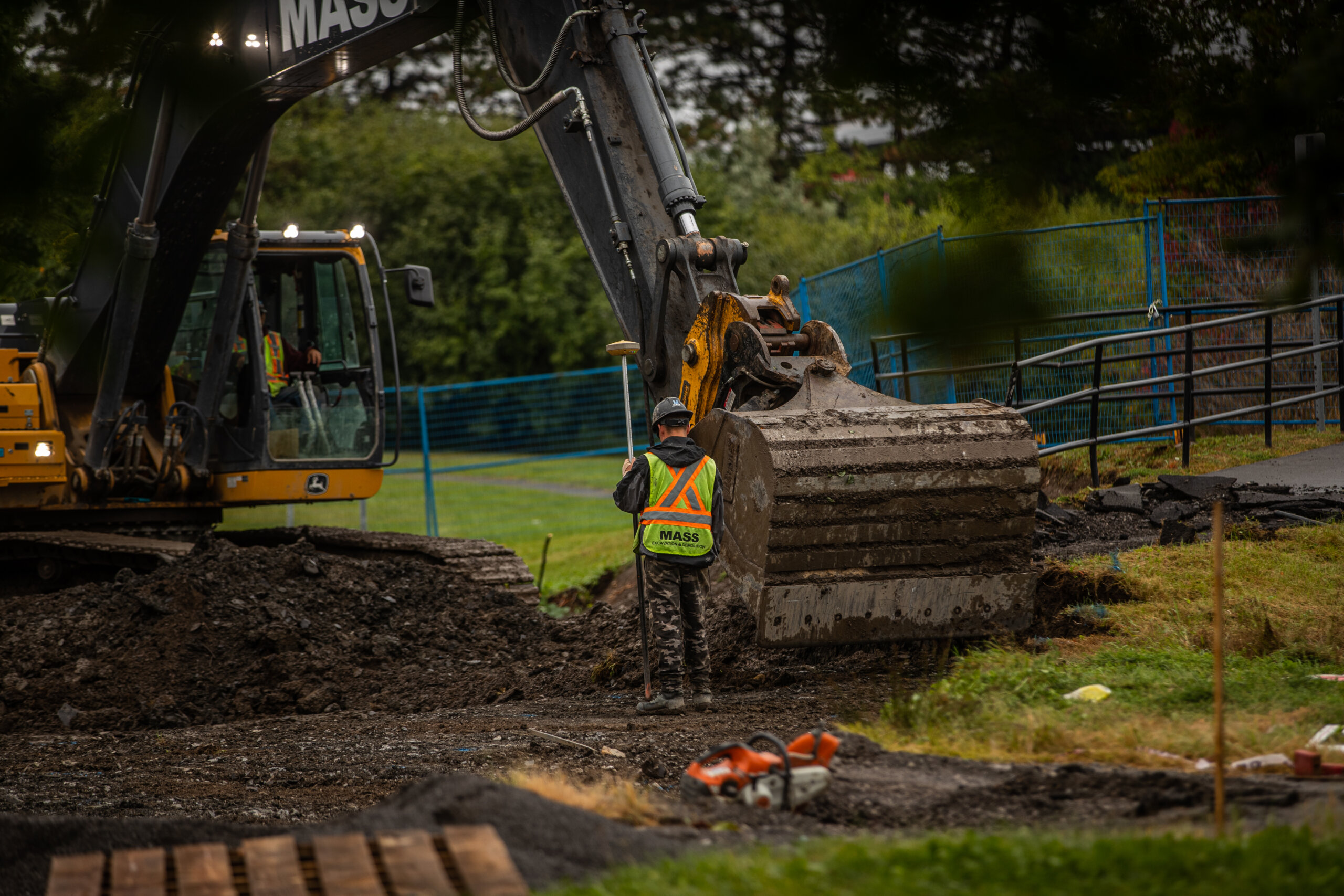Since 2018, Ontario has introduced a series of environmental regulations designed to protect land, water, and natural resources. A major component of these efforts is reducing the volume of waste going to landfill sites, with excess soil from construction projects being a key target for reduction.
Ontario’s On-site and Excess Soil Management Regulation, introduced under Ontario Regulation 406/19 as part of the Environmental Protection Act, aims to minimize the environmental impact of the 25 million cubic meters of excess soil generated each year and promote its reuse.
For construction companies, this legislation represents both opportunities and challenges. Companies must now rethink how they handle and manage the soil excavated during construction and excavation projects and whether it will go to a soil management site, a reuse site, a local waste transfer facility, or a landfill/dump.
Below I’ll explain the key components of the excess soil legislation in Ontario, its impact on the construction industry, and how document management software can help companies remain compliant with the new requirements.
What are the Rules for Excess Soil in Ontario?
What is the Point of the Regulation?
Who Does Reg. 406/19 Affect?
Applicable Definitions
4 Key Components of Ontario’s Excess Soil Regulation
Excess Soil Management Best Practices
3 Ways Excess Soil Regulation Will Impact Ontario Construction Companies
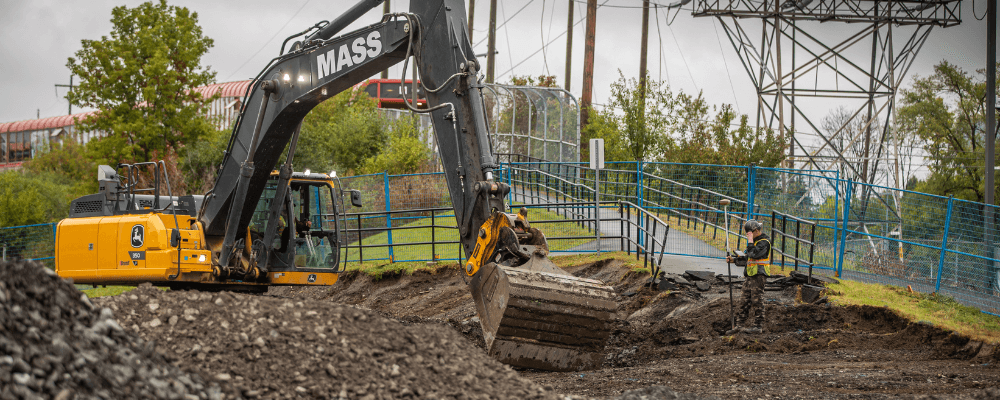
What are the Rules for Excess Soil in Ontario?
Project owners and operators must determine if excavated soil dug up during a construction project will be reused on-site (not considered “excess soil”) or if the soil will be removed from the site (considered “excess soil”). Excess soil is subject to specific rules around reuse, classification, quality assessments, environmental compliance approval (ECA), documentation, and transportation.
Excess soil can be reused if:
- It is transported directly from the site
- The owner of the reuse site agrees in writing
- There is a “beneficial use” for it
- It is dry, and remains dry until it is at the reuse site
- It meets the applicable quality standards
Examples of “beneficial use” include:
- Backfilling
- Grading for the purposes of landscaping, infrastructure, or planned development
- Assisting in the rehabilitation of the reuse site.
What is the Point of the Regulation?
The Excess Soil Regulation was designed to address environmental concerns by ensuring that soil excavated and removed from job sites is handled responsibly.
The goal of the regulation is to:
- Promote the reuse of clean soil in appropriate locations, reducing the need for new soil extraction.
- Reduce illegal dumping and emissions related to transportation.
- Increase transparency and accountability in the movement and management of soil.
Who Does Reg. 406/19 Affect?
The Regulation for on-site and excess soil management affects all construction projects that generate excess soil, including roadwork, infrastructure projects, commercial and residential developments, and other excavation or grading work. Property owners, developers, consultants, and municipalities are all affected by this Regulation.
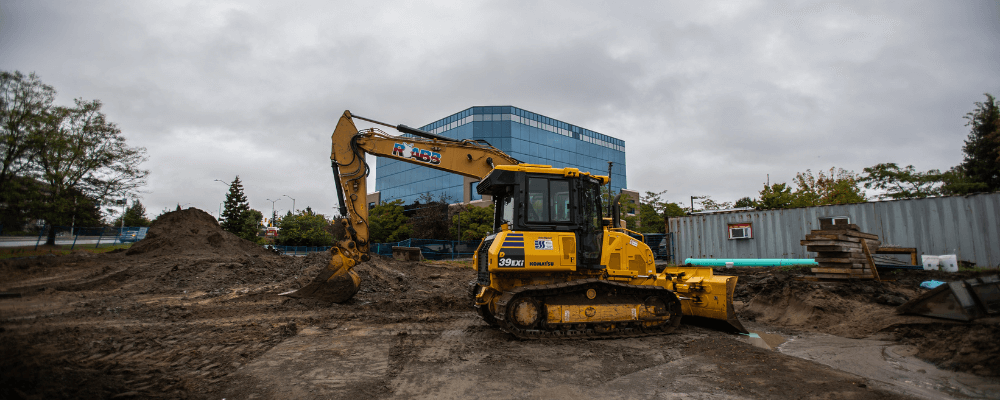
Applicable Definitions
“Project area” is any property where the excess soil is taken from.
“Project leader” is usually the owner/operator responsible for planning and implementation.
“Excess soil” is any soil, crushed rock (or soil mixed with crushed rock) that has been excavated from a site and removed from the “project area”.
“Qualified person” is the one who conducts soil sampling to determine the quality of the soil and any potential reuse.
4 Key Components of Ontario’s Excess Soil Regulation
The On-site and Excess Soil Management Regulation, like any legal document, contains a large amount of jargon and clauses that don’t apply to many cases. These are the important parts you should know about:
1. Excess Soil Registry
To increase transparency and prevent illegal dumping, companies must use the Excess Soil Registry. The Excess Soil Registry is a public online tracking system for construction companies to log detailed information about their soil, including where it’s being moved and for what purpose. The registry ensures that soil movement is monitored and that contaminated soil is properly handled.
Information required by the Registry:
- A description of the project and project area.
- Names, mailing addresses, and phone numbers of project leaders, project area operators, qualified persons related to the documentation, and soil transporters.
- An estimate of the amount of excess soil that will be removed.
- The location of each reuse site and a description of the type of project for the intended reuse of the soil.
- The location of the waste deposit sites and their type (Class 1/2 soil management sites or landfills/dumps).
- Applicable Excess Soil Quality Standards.
Exemptions to the Excess Soil Registry notice:
- The amount excavated is less than 100m3 or less and transported directly to a waste disposal site.
- The excavated soil is topsoil only and transported directly to another site where it will be used as topsoil.
- If a site has never been used as an enhanced investigation project area (industrial use, garage, bulk liquid dispensing facility, operation of dry cleaning equipment)
- If a site has been used as an enhanced investigation project area, the amount of soil removed is less than 100m3, is part of a landscaping project, and the area where the soil was taken is not likely to be contaminated.
- Excavated soil is part of an infrastructure undertaking where the soil will be transported for use in another infrastructure project.
- The project area is located in an area of settlement and the soil removed is less than 2,000m3.
- The project leader entered into a contract before January 1, 2022.
2. Documentation & Tracking
In addition to filing a notice on the Registry, project leaders must also prepare a series of reports and assessments prior to removing soil from the project area.
- Assessment of past uses: A qualified person must assess the likelihood of contamination and identify areas of concern within the project area with regards to contaminants related to previous uses through site evaluation, existing records, and interviews.
- Sampling and analysis plan: A qualified person must make a plan for the areas where the soil or crushed rock will be sampled and analyzed for potential environmental concern (APECs), as well as carry out the collection and testing for contaminants.
- Soil characterization report: A detailed report of the planned excavation area, including any APECs, the depth of the water table, sampling details, and soil quality data.
- Destination assessment report: A description of the volume and quality of the soil to be removed from the project area, the approximate dates, any processing that took place, and details about the destination site.
- Tracking system: A system must be in place to track information such as names and dates related to the excess soil, the quality and quantity of the excess soil load, the number of trucks used (+ plate numbers), and confirmation of receipt at the destination site.
Other types of documentation listed in the regulations:
- Field logs for sampling locations
- Laboratory certificates of analysis
- Hauling records
3. Soil Transportation
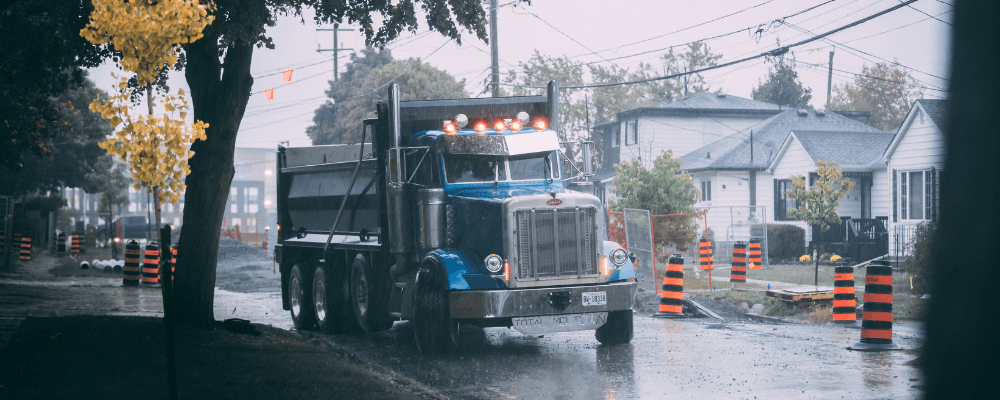
The Ontario guidelines for the transportation of excess soil come with strict requirements for having the applicable records (provided or confirmed by the project leader) on hand before, during, and after hauling the load to a deposit location.
The Hauling Record must be carried by the driver at all times and ready to present to a provincial officer upon request. It must contain:
- The location of the project site
- The date and time the soil was loaded
- The quantity of soil
- Contact information for inquiries regarding the project area
- Company name, driver name, and plate numbers for the vehicle
- The soil deposit site location
Upon reaching the destination site, the record must be updated with:
- Date and time of soil deposit
- Contact information for inquiries regarding the deposit site
- A declaration by the responsible person at the deposit site acknowledging the excess soil delivery
4. Records Retention
There are strict rules regarding recordkeeping with respect to excess soil. Here are the retention details broken down by responsibility:
Project leader: The project leader must retain every document required under the Regulation for at least seven years.
Qualified Person: The qualified person must retain any document prepared by them for at least seven years from the date of the document.
Truck Driver: A person operating a vehicle to transport excess soil must keep a hauling record of the project location, quantity of soil, contact information for responsible parties, reuse/disposal site location, plate numbers, and applicable dates and times for at least two years.
Excess Soil Management Best Practices
There are a few ways to make excess soil management easier for project leaders managing projects with excavation plans. Here are three best practices to consider:
- Maximize On-site Reuse: Excavated soil or crushed rock reused within the local project area is not considered excess soil and does not require the reports and filings outlined in the Regulation. Project leaders and developers should look for opportunities to reuse soil across their projects to avoid the burden of paperwork or threat of non-compliance.
- Develop a Soil Management Plan: A soil management plan for each project would ensure that all of the appropriate steps are taken to meet the regulatory requirements outlined by the Ontario Government. It could also include a relevant list of deposit sites and estimated volumes which could be reused locally. Having plans, procedures, and records in one place would help project teams be proactive in their assessments and overall project plans.
- Go Digital for Documentation Management: Keeping paper records organized and accessible for seven years is a huge burden, and a huge risk. By going digital, you can eliminate the risk of lost documents and signatures. There are tools that can customize forms, allow for external signers, maintain proper document workflows, and allow access from mobile devices from anywhere. Getting all of your soil management documentation under one roof will eliminate risk and alleviate the hassle for subcontractors and haulers.
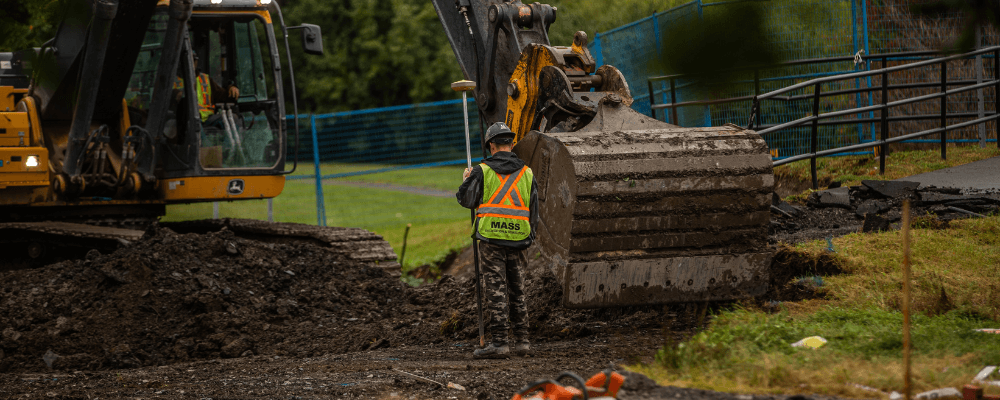
3 Ways Excess Soil Regulation Will Impact Ontario Construction Companies
The introduction of Ontario’s Excess Soil Regulation has far-reaching implications for construction companies. While the regulations are designed to protect the environment and promote sustainable practices, they also introduce new responsibilities and challenges for companies.
Here are some of the key ways it will impact construction companies:
- Increased Compliance Requirements: Compliance with the new regulations requires construction companies to take a more organized and proactive approach to soil management. This means developing detailed soil management plans, conducting soil testing, and keeping accurate records of soil movement. The complexity of these requirements can increase administrative burdens and add new layers of responsibility for project managers. Failure to comply with the regulations can result in hefty fines, project delays, and legal liabilities. As a result, construction companies may need to invest in staff training and new technologies to ensure compliance.
- Cost Management: While the upfront costs associated with soil testing and compliance measures can be significant, effective soil management can help construction companies reduce costs in the long run. By planning to reuse soil on the excavation site, companies can save time on paperwork and reduce transportation costs.
- Technological Integration: The legislation’s emphasis on documentation and tracking has made technology an essential part of compliance. Construction companies are now required to use the Excess Soil Registry to log and track soil movement. Many companies are also turning to digital solutions, such as document management software, to streamline the compliance process to make sure original documents are never misplaced (especially when the retention period is at least seven years!).
